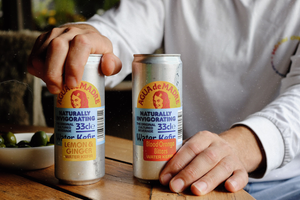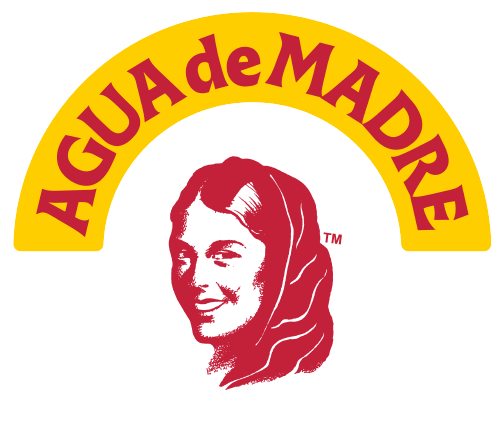What is alcohol?
Alcohol is also known by its chemical name ethanol. Anything containing ethanol can therefore in theory also be called an alcoholic beverage. It is important to note here that alcohol is the active ingredient in beverages classed as ‘alcoholic’ so more typically wine, beer and distilled spirits. Ethanol/alcohol is also a psychoactive substance.
Low ABV
For a beverage to be labelled low abv (Alcohol measured By Volume) it must have an abv of 0.5% to 1.2%. This would mean that the drink still has an active component but at a much reduced, or naturally low, level.
No Alcohol
The term No Alcohol is a term used within the drinks industry to indicate a beverage that has 0.5% alcohol by volume or less. You’ll often find beers labelled no alcohol still contain trace alcohol because of the brewing process involved; this is essentially the same across the board of any fermented product ie the process of transforming sugars into alcohol
In everyday terms, No Alcohol just means anything without an active ingredient; water, fresh juices, tonic water, soft drinks are all non alcoholic beverages.
Why is alcohol perceived to be something that should be avoided or monitored in the first place?
As a psychoactive substance, alcohol causes changes in behaviour, from an increase in feelings of happiness and lowering of inhibitions, particularly in social scenarios, to decreased levels of anxiety and freedom of creative self expression.
Hang on, you might be thinking these all sound like positives, and yet problems arise when a drinker is unable to manage themselves or know their own limits (this often becomes an issue when a substance is treated exclusively as a drug instead of being something that can be sensibly integrated within society), for then those positively perceived reactions can very quickly turn negative in direct proportion to a person's level of intoxication, leading to memory loss, feelings of depression and Impairment of motor, cognitive and sensory functions.
On top of human behavioural reactions, you have other factors to consider that, in the Madres opinion, are just as relevant to take into consideration, if not more so, than simply measuring the level of alcohol present. The main one being that in mass production, far and away the most available to us on the high street and in the majority of drinking establishments, the focus has moved away from traditional production methods to focus simply on consistency and price point of a product instead of retaining any inherent natural, and positive, properties.
Now here’s the catch
Our Agua De Madre Water Kefir is naturally Low Abv, containing trace amounts of alcohol around 1.2%; ethanol, or alcohol, is a naturally occurring by-product of the fermentation process, much like the processes that turn grapes to wine and grains to beer.
As previously observed here, alcohol is inherent to most living things, increasing due to a number of variables, ripeness and fermentation being some major ones (can we link to the Dry Jan blog post here? Inbound link) Anything fermented will have alcohol present, kimchi, pickles, sauerkraut etc. The Low ABV label was created in more recent years in reaction to polarised behaviour and opinion around alcohol, as guidance for responsible drinking thereof and a perceived societal need for a moderated middle ground.
So when is an alcohol not an alcohol ….?
Well, like many things in this life, you can’t split anything black/white and where water kefir is concerned, the living (alcohol) component is simply it’s live active cultures - so if you removed these completely, in order to remove the alcohol, then you would also be removing any living element, leaving you with a dead beverage with none of the active, probiotic, components essential for good gut health and a happily functioning microbiome system. And actually, the tiny amount of alcohol that is present has already metabolised before it hits your bloodstream meaning it won’t actually get you drunk ; sorry - or you’d have to try really, really hard; you’d need to drink 2 of our large 75cl bottles to ingest just 1 unit of alcohol!
What’s a good rule of thumb for choosing an ‘alcoholic’ beverage then?
Well, for argument and simplicity sake, if we continue to take water kefir as our example, we’ve already established that the level of alcohol present is simply indication of it being ‘alive' and being alive means it is an active, rather than inactive, or essentially dead, ingredient. The beauty of ingesting something alive is that you are enhancing and enriching your own system with another living organism, continuing the story of that you have imbibed as it merges with your own; this all aside from the well researched and documented benefits of drinking water kefir for it’s probiotic qualities.
And so if we are discussing the negative aspects of drinking alcohol - certainly our culture's attitude to drinking is on one hand a major issue (perhaps worthy of a blog post in it’s own right!), on the other, it is that the vast majority of easily accessible alcoholic beverages are mass produced, and that sadly comes with the caveat that any levels of ‘alive’ have long been killed in the production process; that which favours consistency and a low price point over harnessing and maintaining any inherently positive attributes.
If you take (mass produced) wine, for example, alcohol becomes simply your ‘drug’ of choice, now that, on the whole, the living organisms have been removed, and drinking is solely for drinking’s sake; it is here where it becomes relevant to monitor the level of ABV as this is the only active element at play and one that has become a negative component.
As with all things, the Madre recommends looking for small scale, independent producers that use minimal intervention in their production methods - for wine look to ‘natural’ or ‘biodynamic’ methods, these mirror not only our own but traditional processes.
Getting to the root of an issue is often more complicated than is first apparent and then quite often merely about arming ourselves with the right information in order that we can responsibly make more conscious and informed decisions.



